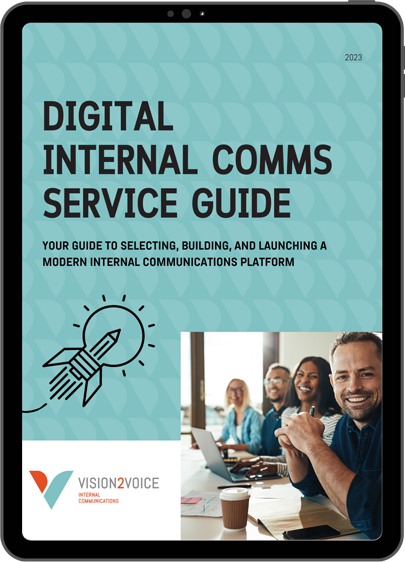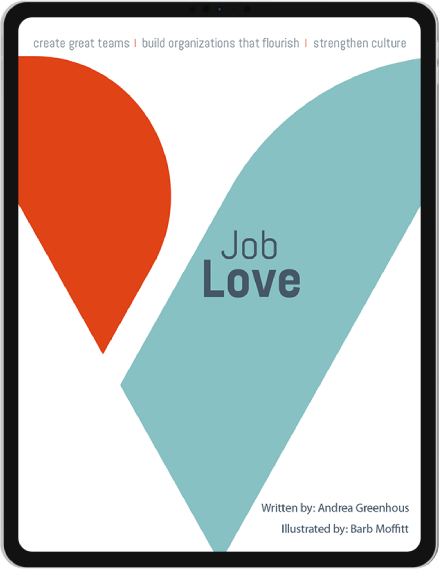
People are messy. People are complicated. And there’s not one person on this planet that is the same as another.
I believe this is what makes humanity so wonderful. It can also make it challenging to create an exceptional employee experience and meaningful communication for everyone. Take an internal communications audit we are working on — some people find the newsletter excellent and read everything and some only read a few select stories. Some want more business content, while others are more interested in the stories about people.
It’s easy to see the challenge before us, but we are all human, we all have brains and these brains basically function in the same way. That’s why understanding brain science is so vital. From ancient areas of our brains to the most recent developments in brain science, this blog outlines seven things about our brains that you need to know to create meaningful communication, support people through change, and deliver an exceptional employee experience.
Fear hijacks our brain
Deep in our brain lies the amygdala and this ancient structure is responsible for our survival. Back in our caveman days, the amygdala was triggered in the face of danger. It drives our fear response which is often referred to as fight or flight. This primal reaction helped us survive in the face of danger, such as an unexpected encounter with a tiger.
It’s safe to say that most workplaces don’t have tigers lurking around the corner ready to pounce, yet our fear response remains alive and well. Examples of modern threats are a boss with unrealistic expectations or a confrontational co-worker. The problem is that our brain can’t tell the difference between these modern terrors and a feline predator. What’s worse, the analytical reasoning you need to solve complex problems in today’s workplace is hijacked and you can’t function effectively.
Improving the employee experience starts by eliminating fear in the workplace. Fear generally comes from a lack of psychological safety, a toxic work environment, ill-equipped managers, a lack of respect, and inequality. Many of my blogs and my ebook, Job Love explore these topics and advocate for open, honest, and meaningful communication as a starting point for solving many workplace issues that create fear.
Negativity is like Velcro
Negativity bias is a similar brain response to fear. As an unfailingly optimistic and positive person, I was taken aback when I learned that negativity bias affects even those of us in the glass half full / rose coloured glasses group. It’s why negative political ads work even when we don’t like them and it is the source of the old news editor adage, “if it bleeds, it leads.”
A negative event causes increased activity in our brain, and that’s how it becomes more dominant in our memory. As Rick Hansen said, the brain is like Velcro for negative experiences and like Teflon for positive ones. In our caveman days, negativity bias helped us survive by increasing our focus on dangers. Today, negativity bias can turn a reasonably good day into a terrible one with just one small, bad event (you spilled your coffee on the floor). It also has a powerful effect on decision-making, relationships, and motivation – all critical elements of building an exceptional employee experience.
Understanding the stickiness of negative events in the employee experience is important. For example, minimizing a negative event in communication with employees will be viewed as being out of touch with reality. Instead, make sure you demonstrate empathy and sensitivity to the negative event for a sustained period of time.
Uncertainty is uncomfortable
Our brains depend on being able to shift to autopilot for many of the things we do every day. This automatic functioning conserves energy and allows us to do multiple things at one time – walk and talk, for example. Uncertainty and ambiguity register in our brains as error signals and a threat. Our brains literally must work harder when there is uncertainty and that reduces other types of brain function, such as memory, focus and performance.
Change in organizations increases uncertainty, triggering fear, anxiety and often paralysis. There is a natural tendency for leaders to withhold information, but a lack of transparency about how decisions will be made and why further increases uncertainty. It goes without saying that open, honest, and frequent communication in organizations can reduce apprehension and prevent distress during times of uncertainty and change.
You CAN teach an old dog new tricks
Until recently, scientists thought the brain was hard-wired during childhood and didn’t change once humans reached adulthood. New science has shown that we can rewire our brains and change the way we think, feel and act. This concept is called neuroplasticity and describes the ability of the brain to change over time, forming new neural connections. Understanding the ability of our brains to change is important for culture and technology transformation initiatives where people are being encouraged to think and act differently or adopt new skills and ways of working.
Our work environment can foster learning, change and adaptation in our brain. Rest is important – both sleep and downtime play a role in helping the brain form new neural connections. This is yet another reason why workplaces with hustle cultures, those that encourage long hours and overwork, can be harmful. Creating learning environments that provide opportunities for novelty, challenge and focused attention encourages positive changes in our brains.
We are wired to learn and innovate
It’s not only cats that are curious – humans are too. Research has shown that dopamine, the reward system in the brain, is triggered when we explore, investigate, and gather information. Curiosity has been instrumental in the development of human survival and our ability to adapt and evolve over time. Without curiosity, civilization as we know it wouldn’t exist today.
Our curiosity encourages learning and innovation in organizations. It builds an understanding of where the organization is going and how it will get there. And our curiosity about other people helps us develop relationships and connect with others.
Nurturing and feeding curiosity as part of the employee experience can be accomplished in many ways. For example, sharing people’s stories can encourage curiosity about others. Similarly, providing people with rich content to explore a variety of topics (for example, your organization’s ESG framework) can feed the curiosity of your employees.
Surprise and disruption get attention
I love telling Seth Godin’s story of the Purple Cow because we can all relate. When you’re driving through the country, the black and white or brown cows all blend into the scenery. But when you see a purple cow, now that’s something to pay attention to!
Our brains are wired to focus on what’s different. It’s yet another ancient evolutionary process that helped us spot danger in our caveman days. When something is out of place or a pattern is broken, it is time to pay attention. That’s why a purple cow will stand out and be memorable.
Next time you are developing an employee newsletter, planning a town hall, or organizing an employee recognition event, think about how you can delight and surprise employees. Using disruption will help capture their attention and create something memorable.
We need to connect and belong
Brain scans of someone who is suffering physical pain are eerily similar to a brain scan of someone who is experiencing social rejection. The hormone oxytocin is secreted when we make a strong social connection with someone. This hormone increases feelings of trust, empathy, and affection.
Even though our brains are built to help us function as part of a group, our brains are constantly figuring out whether to connect with others and who is part of our ‘tribe’. What drives division and disconnection goes back to the fear centre in our brain (yup, we are right back where we started in this blog!). When our brains react with fear when we meet someone new, it automatically categorizes them as a threat or someone who doesn’t belong in the group.
To create connection and belonging, we need to tap into the more modern side of our brain – the parasympathetic system, where empathy and caring live. This happens when we foster a shared identity and reinforce our interconnectedness. As I’ve explained before, in today’s workplace, internal communication plays a key role in building a connection and fostering a workplace where we solve problems together.
I often write about how to capture employees’ hearts but our brains and our hearts are connected. Without understanding the human brain and how it works, you simply can’t create meaningful internal communication or an exceptional employee experience. For neuroscience-based solutions to your toughest people challenges, book a discovery session. We can help.






